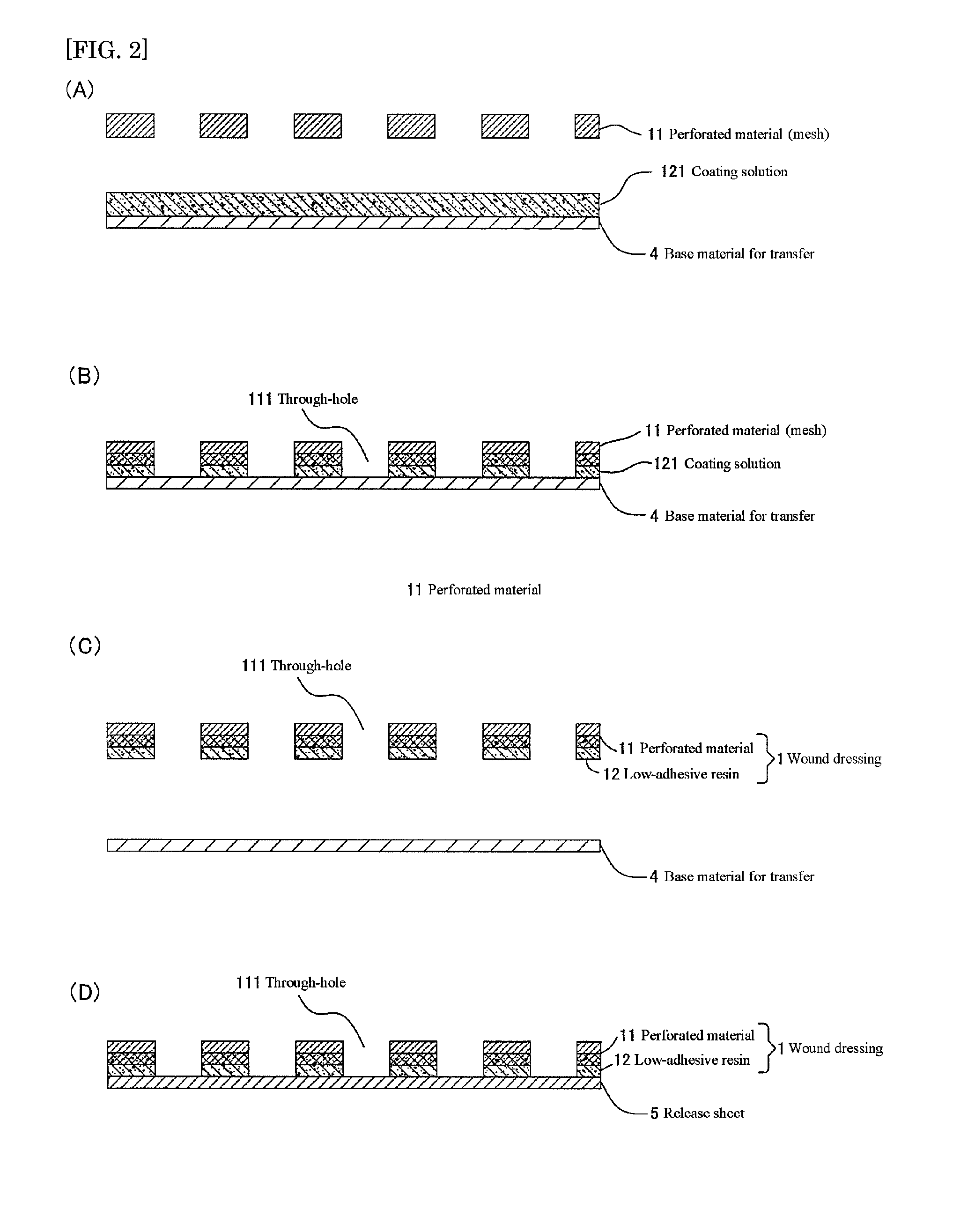Wound dressing
a wound dressing and wound technology, applied in the field of wound dressings, can solve the problems that the patent document 2 cannot solve the problem, and the risk of easy adhesion of the wound dressing to the neogenetic tissue of the wound area, and achieve excellent adhesion prevention properties
- Summary
- Abstract
- Description
- Claims
- Application Information
AI Technical Summary
Benefits of technology
Problems solved by technology
Method used
Image
Examples
example 1
[0057]A wound dressing was produced in accordance with the production method described above. Specifically, the wound dressing was produced as follows.
[0058]A two-pack addition reaction-type silicone resin (manufactured by Dow Coming, trade name “DOW CORNING 7-9800”) mainly containing a vinyl group-substituted polydimethylsiloxane, an organo hydrogen polysiloxane, and a platinum catalyst was mixed and the obtained mixed solution was applied onto a fluorosilicone treated base material for transfer at a predetermined thickness. Next, onto the coated silicone resin, a perforated material made of a knitted fabric formed of a polyester multifilament was applied, and the silicone resin coating face and the perforated material were laminated. The perforated material had an average opening area of through-holes of 0.22 mm2, an average through hole number of 155 cm−2, a perforated rate of 35%, and a thickness of 330 μm. The number of filaments in the multifilament constituting the knitted fa...
example 2
[0059]A wound dressing was obtained in the same manner as in Example 1 except that the average opening area of through-holes, the average through-hole number, the perforated rate, the thickness of a perforated material, and the number of filaments in the multifilament were changed as shown in “Table 1”.
example 3
[0060]A wound dressing was obtained in the same manner as in Example 1 except that the average opening area of through-holes, the average through-hole number, the perforated rate, the thickness, the number of filaments in the multifilament, and the diameter of the filament were changed as shown in “Table 1”.
PUM
| Property | Measurement | Unit |
|---|---|---|
| Area | aaaaa | aaaaa |
| Adhesivity | aaaaa | aaaaa |
| Permeation properties | aaaaa | aaaaa |
Abstract
Description
Claims
Application Information
 Login to View More
Login to View More - R&D
- Intellectual Property
- Life Sciences
- Materials
- Tech Scout
- Unparalleled Data Quality
- Higher Quality Content
- 60% Fewer Hallucinations
Browse by: Latest US Patents, China's latest patents, Technical Efficacy Thesaurus, Application Domain, Technology Topic, Popular Technical Reports.
© 2025 PatSnap. All rights reserved.Legal|Privacy policy|Modern Slavery Act Transparency Statement|Sitemap|About US| Contact US: help@patsnap.com



